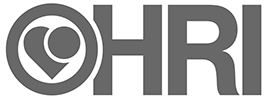
The Impact of Values On Team Dynamics and Corporate Culture
As leaders, our values – the core motives, interests, and beliefs that determine what we desire and strive to attain – have tremendous consequence. Values influence which type of position, job, and environment will be most motivating for us and when we will feel the most satisfied. Our unconscious biases, or the unconscious projection of our values onto others, determine how we make decisions, how we reward performance, and what type of work culture we are likely to create.
The Power of Unconscious Biases
When Jeffrey Skilling took control of Enron, he had a reputation as a smart, extremely competitive business man with a penchant for risk taking – qualities that led to early success and facilitated his rise to the executive suite.
These values became counterproductive, however, when Skilling’s unconscious biases began to shape Enron’s culture. Lauding of creative risk-taking and fierce internal competition coupled with huge incentives led to not only stretching, but circumventing and breaking legal and ethical boundaries to bolster short-term performance.
The 2001 collapse of the Enron Corporation was, at the time, the largest and most complex bankruptcy filing in American history, and the scandal that unfolded in its aftermath made the Enron name synonymous with white collar crime.
Obviously, Skilling’s was an extreme case, but although unconscious biases aren’t always counterproductive, they are always impactful, especially when they come from a position of leadership. Because values are an inherent part of our personality, however, many leaders are unaware of the kinds of values they hold, and how their values impact their subordinates.
Values assessment, when part of a comprehensive leadership development program, is the most effective way to make leaders aware of their unconscious biases. By doing so, we can adapt our behavior in ways that will create a more productive working situation for ourselves and our teams.
The MVPI Scales and Unconscious Biases
Recognition: Wanting to be the center of attention, assuming that other people need attention as much as you do, and not understanding modesty.
Power: Driven to win and make a difference, assuming that other people are as competitive as you, and disliking people who lack a winning attitude.
Hedonism: Looking to have fun and share experiences, assuming that other people are as fun- seeking as you, and not understanding people who are all business.
Altruism: Desiring to help those who are disadvantaged or victimized, and not understanding the need for self-reliance.
Affiliation: Seeking opportunities to network, assuming that others want to interact as much as you do, and not understanding people who don’t want to be part of a team.
Tradition: Respecting hierarchy, rules, and tradition, assuming that others are as conservative as you, and disapproving of non-traditional behavior.
Security: Disliking risk-taking activities, assuming that others are as cautious as you, and not understanding people who like to test the limits.
Commerce: Wanting to acquire concrete symbols of success, assuming that others are as materialistic as you, and not understanding people who are indifferent to money.
Aesthetics: Needing to be in attractive environments, assuming that others care as much about quality as you, and not understanding people who lack a sense of style.
Science: Preferring to solve problems with logic and data, assuming others care as much about finding the right answers as you, and not understanding irrational or intuitive decisions.
This article was written by Hogan Development Survey (HDS). An assessment tool regularly used by Corporate Diversity Pathways.
To discover more about unconscious biases in the workplace, schedule your free consultation with us here.





















